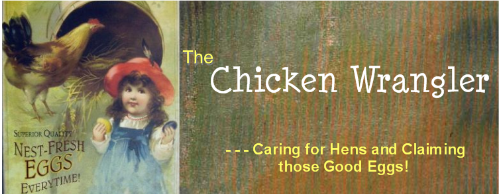 |
| Miss Lissy, at left |
Hope you are remembering to provide fresh water daily to your livestock - the chickens, in particular. Water from a warmed device is best - warmth encourages them to drink. If they are on pelleted feed and aren't drinking, the feed can get stuck in their crops and cause blockages. The blockage will look like a hard lump off to the side of the birds neck, and it will be semi hard or rock hard. The bird will have stopped eating or drinking anything at all, which is not a good sign! The bird will have nothing to excrete, either. It is blocked from both ends. The bird may take on a sickly posture - head tucked down, tail tucked down, and may be trying to eliminate, with no success. When blockages happen, there are several ways to open things up again, if you are not squeamish. (If you ARE, then call your veterinarian - - - IMMEDIATELY!)
Blockages can be opened by inserting a thin tube into the opened mouth of your chicken and, moving it past the opening to the airway; pipe in small amounts of tepid water and mineral oil. Not too much all at once - you want it to go into the throat, not the windpipe. If you pipe it too quickly, it can be inhaled, and your bird will "drown" in the fluids that were meant to save her. Another way to assist in blockage removal is to hold the chicken upside down, head near the ground, and massage the blockage in its crop until it "vomits". Do this in increments of 30 seconds only, then let the bird rest upright, and then turn it again and massage for 30 seconds, then let it rest. You should have success in a short amount of time if the blockage isn't too horrid. Keep the bird isolated in a separate area where you can keep an eye on her to be sure she's eating, drinking, and "emptying out" on a regular schedule. When all looks well, return her to her flock-mates.
Happy Winter -
the ChickenWrangler









